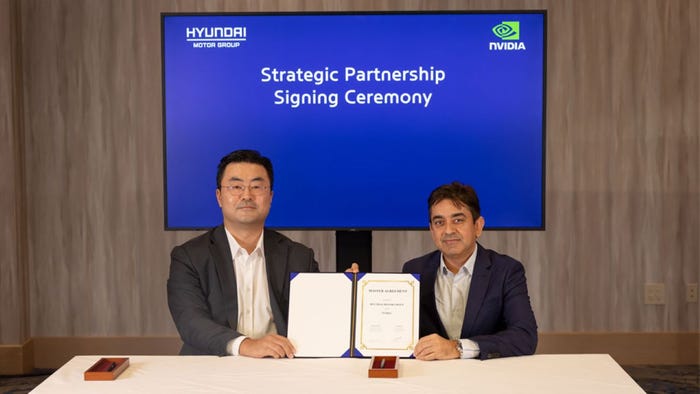RISC-V Europe Summit Debuts Among Signs of Significant Growth in Advanced IoT Applications
The open-standard reduced instruction set computing architecture gained prominence in recent years as companies seek alternatives to more traditional architectures
.png?width=1280&auto=webp&quality=95&format=jpg&disable=upscale)
The first RISC-V Summit Europe, held in Barcelona, Spain, from June 5-9, highlighted RISC-V International’s commitment to expanding the software ecosystem for the architecture and removing any remaining obstacles to mass adoption of the standard.
RISC-V, an open-standard reduced instruction set computing (RISC) architecture, has gained prominence in recent years as companies seek alternatives to more traditional architectures such as x86 and Arm. RISC-V has gained particular traction in the IoT, where its flexible, scalable, low-power capabilities have proven attractive for many vendors. From initial designs in microcontrollers and deeply embedded sensors, the architecture has spread to more advanced applications such as edge AI and advanced industrial designs.
Callista Redmond, CEO of RISC-V International, the governing body behind the standard, said the new European summit had particular strength in the high-performance compute and public-sector areas.
“Europe grew from a strong foundation in research and universities and has grown readily into commercialization as well as having public-level funding from the European Union, and those elements are all coming together now, so this was a great year to launch this event,” Redmond said. “I think the Europe summit has a heavier HPC and public sector focus with government- funding.”
Redmond also explained that the newly launched regional summit was an opportunity for partners to discuss collaboration in both technical and commercial areas. “In the past, we've had technical workshops, and then there have been a sprinkling of other, smaller types of engagement. But in particular, this is the first time we've brought together a concentrated focus both on technical depth and industry momentum. In other words, it's show-and-tell time — sharing where we are commercializing and also focusing on the technical workshop aspect where engineers want to learn more, discuss what they're working on, what their missions are and to collaborate with others.”
The conference was a showcase for the new RISC-V Software Ecosystem (RISE) project, which will use a pool of talent across members to accelerate the development of software for RISC-V, as the lack of software has long been considered an obstacle to the architecture’s growth. RISE intends to address this by developing collectively open-source software tools and libraries for developers to use to speed time-to-market. RISE intends initially to focus on developing compilers and toolchains, debug and profiling tools, kernel and virtualization, language runtimes, Linux distro integration, simulators and emulators, system libraries and system software. The availability of these tools and the software they enable will allow a wider selection of users to adopt RISC-V as an architecture.
Omdia’s recent report, entitled RISC-V in the IoT—2023 Analysis, forecasts strong growth in semiconductors using RISC-V to continue, predicting the 150% compound annual growth rate (CAGR) from 2018-2023 continuing through 2028 almost undimmed, with the standard finding particular growth in both automotive and industrial segments.
“Despite the economic headwinds that organizations are feeling, we're continuing to see uninterrupted momentum behind multinationals, start-ups, and everyone in between engaging and getting involved,” Redmond said. “We've seen in multinationals, where RISC-V was growing in one corner of the business, that it is now growing in multiple parts of the business. We see that in companies like Google who has gotten even more broadly involved, or Intel who has different pockets of activity going on and is very engaged in the community.”
One particular vector for growth is in AI applications at the Edge, with Omdia predicting 10% of RISC-V processors in advanced automotive applications (including driver assistance, cockpit, and infotainment) would be RISC-V processors by 2028, while for industrial applications, roughly 6% of RISC-V processors would be engaged in AI or ML. This suggests advanced RISC-V applications will grow above the rate of the technology as a whole.
Redmond agreed that these applications would be helping to buoy the standard.
“There's so much activity going on in automotive, in data center, and a lot of the excitement around AI is coming to RISC-V as well,” she said. “Especially as companies look to streamline and build the mechanisms and machines that can really support those new challenges, those growth workloads. I think the tide will continue rising for embedded as well, but it’s the higher-performance end of the spectrum that you're going to see demonstrated a lot more.”
.png?width=700&auto=webp&quality=80&disable=upscale)
By 2028, Omdia predicts a full 30% of all processors in the IoT will operate using the RISC-V instruction set. Redmond added that this represents the depth of funding matching an already-present technical enthusiasm for the standard, which has long been popular with companies interested in more control over the architecture they deploy.
“What has shifted is the scale of investment that those members are making in their own strategies, the level of investment that they're placing on broadening their portfolio and deepening their investment, which is a great sign for the entire industry. And I think that's where you start to see these tipping points,” Redmond said.
About the Author
You May Also Like
.jpeg?width=100&auto=webp&quality=80&disable=upscale)
.jpeg?width=400&auto=webp&quality=80&disable=upscale)






